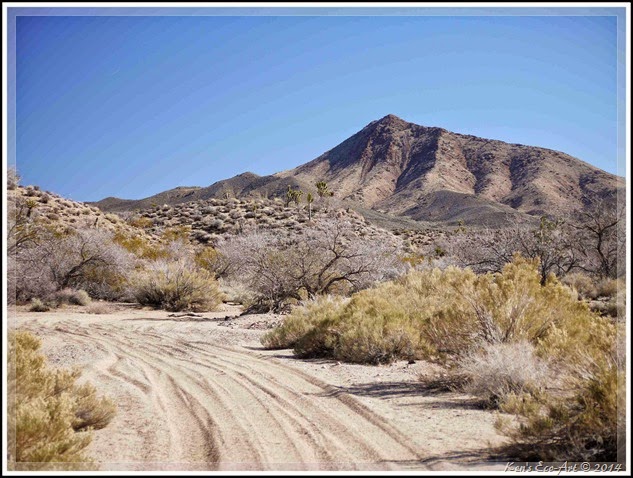 |
| (Fig. 01) |
|
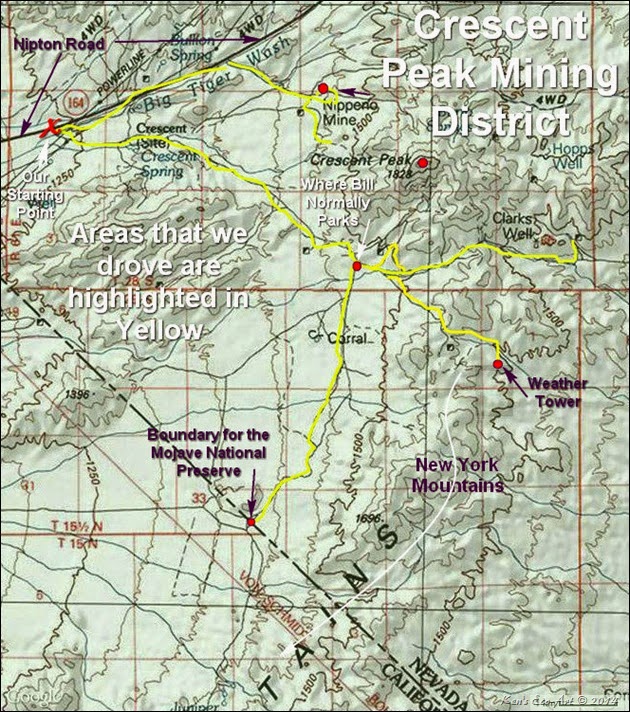 |
| (Fig. 02) |
|
| Directions: From the Stratosphere Casino head northeast on Las Vegas Blvd about 3 miles and bear right to merge onto US-515/93/95 south towards Boulder City. Follow US-93/95 for 17 miles and then merge onto US-95 South (Veterans Memorial Hwy) toward Searchlight/ Laughlin/ Needles. When you reach Searchlight, about 36 miles, turn right, west, onto NV-164 (aka Nipton Rd and Joshua Tree Highway) towards Nipton. Travel about 12 miles west of Searchlight and turn left onto Crescent Peak Road. Follow this dirt road for about 3 miles until you reach a fork in the road with a sign indicating that continued vehicular traffic toward the Crescent Mine is prohibited. Bear right and stop and park at the top of the hill. Distance from Point of Origin: 65 miles. Estimated (One Way) Travel Time: 1 hour and 10 minutes. |
|
| Mining History: The turquoise mine at Crescent Peak was “re-discovered” in 1889 or 1890 by a George Simmons. A review of the site revealed the remains of rude dugouts with collapsed roofs of logs and brush. From a study of the growth rings in the logs found in the fallen roofs, and a study of nearby implements (broken pottery and the remains of a lapidary shop), archaeologists estimated the mine must have been worked and abandoned 200 years before Columbus reached America. From what I have been able to piece together, somewhere around 1894 an area centered around Crescent Peak, between the northern New York Mountains and the southern end of the McCullough Range, located about 12 miles west of Searchlight, became known as the Crescent Peak, a.k.a. New York, a.k.a Timber Mountain Mining District. Over the past 125 years the mines at Crescent Peak have been know by a variety of names, including the Simmons Mine, the Turquoise Mine, the Aztec Mine, Right Blue Mine and the Crescent Peak Mine. It is about 12 line miles west of Searchlight in the basin on the south and west flanks of Crescent Peak. During early operation of the Simmons mine, numerous occurrences of turquoise were prospected for a radius of about a mile from the main mine area. In 1896 Simmons sold the mine to his partner, J.R. Woods who renamed it The Turquoise Mine. He abandoned it when the ore dwindled to a point where it could no longer be mined profitably at decreased prices. Over the years, a number of miners worked the veins and abandoned them. The next registered owner and operator was O. R. Spear who bought the original claims at a tax sale. Spear died in 1965. After that it was worked by various people who purchased leases on the claims. In December of 2013 I received an email from Bill Jones recounting that he worked the mine back in 1976. Click here to read … E-mail from Bill Jones. Though it’s unclear when the family actually purchased the claims, the current owners are Randall "Bubba" Crank and his sister Marquetta San Romanm. For a more detailed background and history of this famous mine, click this link: A History of Crescent Peak Mine. Today there is evidence of many prospects that attest to this mine’s vigorous activity. More recently, a turquoise called Lucky Peak Turquoise has been mined from a new deposit "somewhere" in Crescent Valley, Nevada. Containing beautiful shades of green and blue, the blue is getting harder and darker as they get deeper in the mine. |
|
 |
| (Fig. 03) |
Area Description: Stopping at the parking location indicated in the directions above (Fig. 02) provides the opportunity for some great views and some very pleasant desert hiking. However, it should be noted that hiking northeast, towards the Crescent Peak Mine itself, should be avoided. This well posted area is private property (Fig. 03) and contains dangerous, ongoing mining operations that need to be avoided. There are a couple of large washes offering great views of Crescent Peak that run parallel to the road that also make for some nice hiking. Crescent peak is the prominent pyramid shaped peak (Fig. 01) on the northeast end of the New York Mountain range on the south side of Nipton Road just east of the town of Nipton, CA. This rarely visited peak provides stunning views in all directions. The summit, at 5,994 feet, provides views of the Ivanpah Valley as well the peaks of McCullough Mountain, Hart Peak, Castle Peak, Clark Mountain, Kingston Peak, and Spirit Mountain. This is a rugged desert peak that should not be overlooked. Depending upon the time of year, you will experience a wide variety of desert flora when hiking this area.
|
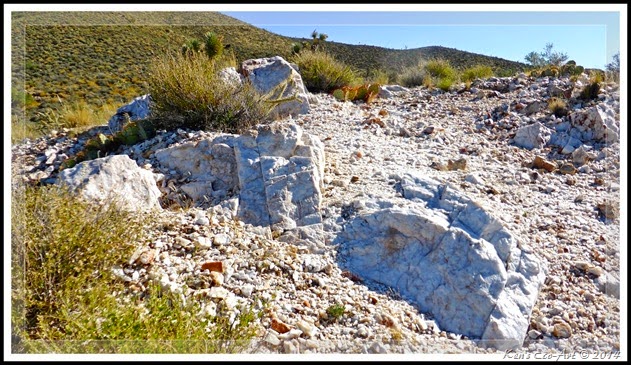 |
| (Fig. 04) |
|
10/22/2016 Trip Notes: I took my hiking partner Jim Herring to this location to show him some of the old gold mining structures (Fig. 04a) in the area. While hiking around this area, we also spotted some long-eared rabbits and lizards (Fig. 04b and 04c).
 |
| (Fig. 04a) |
 |
| (Fig. 04b) |
 |
| (Fig. 04c) |
09/25/2014 Trip Notes: Our second stop of the day along Nipton Road was near the end of Crescent Peak Road, just shy of the Crescent Peak Mine. On todays visit I only captured a handful of pictures, the majority of which I turned into the collage found below (Fig. 5). I let my hiking partner for the day, “Buster” Brown, upper right of (Fig. 5), lead me to a spot about a quarter mile northwest of the spot where Bill normally parks the van. After some hiking along a small wash, upper left of (Fig. 5), we climbed up a small hill that was capped with a large outcrop of quartz (Fig. 04) and middle left of (Fig. 5). Hiking to the backside of this large quartz mound revealed a small exploratory adit, middle right of (Fig. 5). Although the discovery of gold is often associated with quartz, it didn't appear that any was found here. The top of this hill provided some nice views of the surrounding area, including the now complete Ivanpah Solar Electric Generating System (ISEGS) seen in the distance of the bottom picture in the collage. For a better view of the solar facility, refer to the close-up shot in (Fig. 6). For more information on this, visit my page on Nipton California, the final stop on today's daytrip.
|
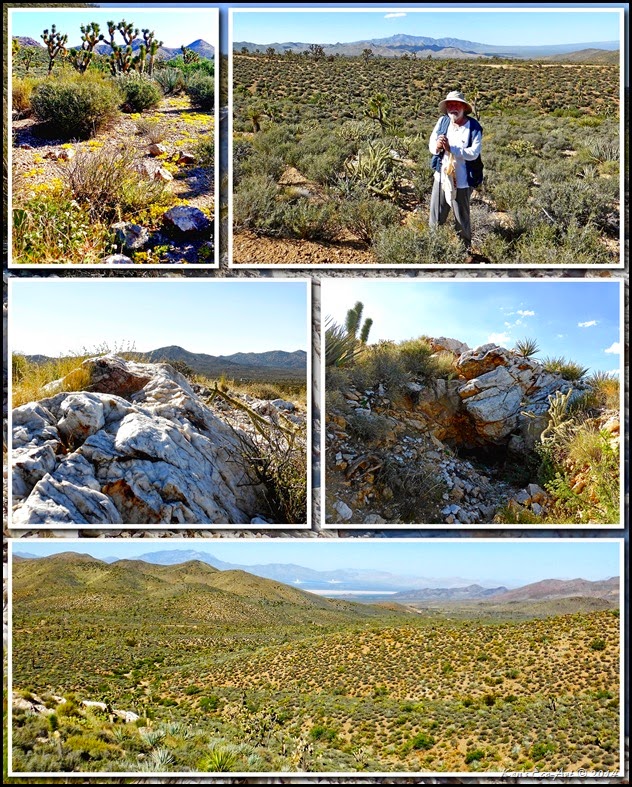 |
| (Fig. 05) |
|
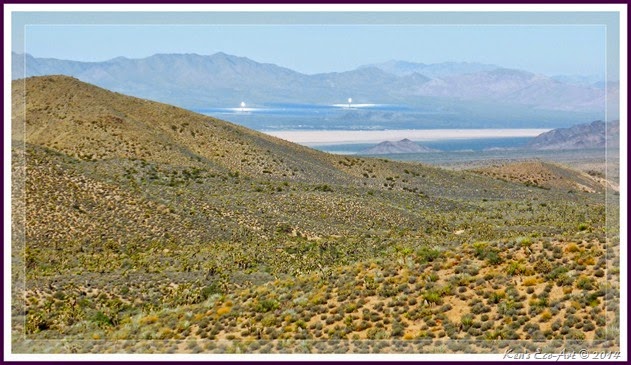 |
| (Fig. 06) |
|
| 09/30/2013 Trip Notes: My friend Harvey Smith and I decided to spend a day 4-wheeling around the mines surrounding the Crescent Peak area off Nipton Road. We drove along three different roads that led us out into the desert. One took us to an area called Clarks Well (Fig. 02). A second road took us to a radio tower on the ridge of the New York Mountains. The third took us to California and the boundary of the Mojave National Preserve. After this we drove back down Crescent Peak Road to the Big Tiger Wash that runs along Nipton Road (Fig. 02) and into an area on the north-western flank of Crescent Peak. Here we located the remains of the Nippeno Mine (Fig. 02). We found the size of this mine to be quite surprising. Unfortunately, many of the roads in this area are marked “private – no trespassing”, thereby limiting our exploration efforts ... Crescent Peak & Nippeno Mine. |
|
| 09/19/2013 Trip Notes: On this visit I hiked a wash that skirted the Crescent Peak Mine property, capturing pictures of the surrounding flora. Click here for information and pictures of flowers taken on this trip ... Update 09/19/2013 - Crescent Peak Mine Road. |
|
| 04/04/2013 Trip Notes: On this visit to the area, Buster and I began hiking in a southwest direction from our parking area. We started out following a rather unused dirt road that eventually just turned into a wash. We passed a ‘dump’ area with a couple of old cars/trucks (Figs. 07 & 08) and other trash that people were using for target practice. Probably what I considered my best 'find of the day’ were the pictures I took of a Desert Spiny Lizard (Fig. 09) that Buster found sunning on top of an old mine timber. Click the following link to learn more about this spiny little fella … Desert Spiny Lizard (Sceloporus magister). Though sparse, I did manage to capture a few shots of some desert flowers and plants that were blooming along our hiking path. A Dune Evening Primrose (Fig. 10), an Indian Paint Brush (Fig. 11), and more (Figs. 12 & 13). |
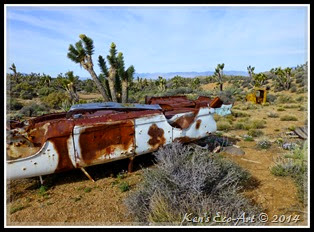 |
| (Fig. 07) |
|
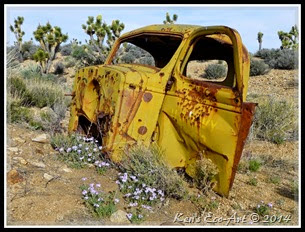 |
| (Fig. 08) |
|
|
 |
| (Fig. 09) |
|
 |
| (Fig. 10) |
|
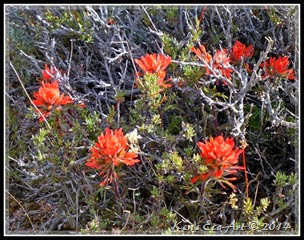 |
| (Fig. 11) |
|
|
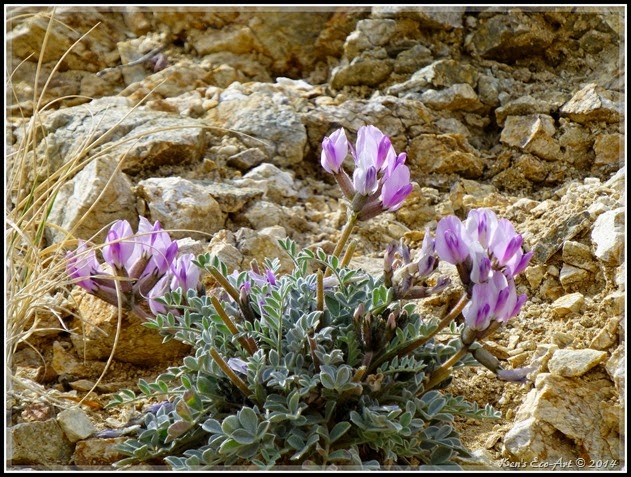 |
| (Fig. 12) |
|
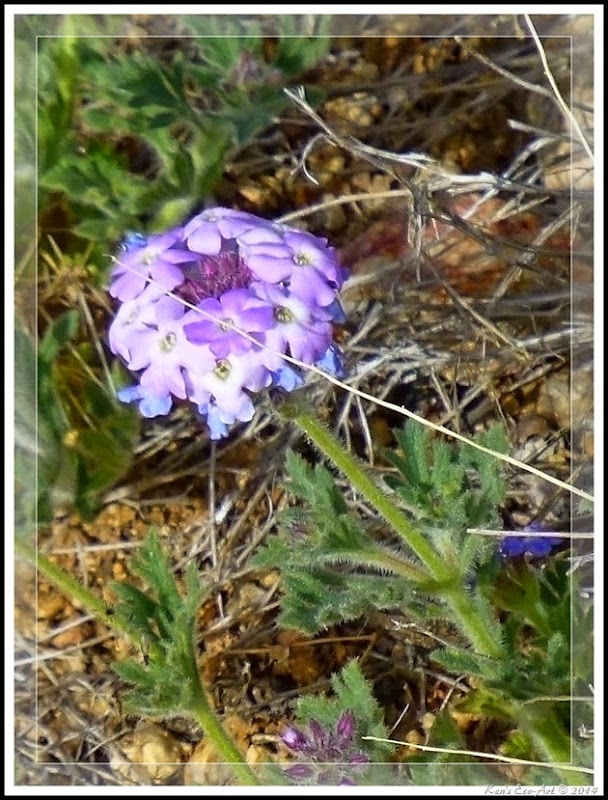 |
| (Fig. 13) |
|
10/04/2012 Trip Notes: On today’s trip with the rock-hounds, because we spent so much time hiking Walking Box Ranch Road, there just wasn't enough time to do any real extended hiking here. Maybe next time. On our way back to the van, we walked a wash paralleling the road (Fig. 14) that was filled with a variety of vegetation and plant life that provided some color to our hike. Besides a large number of Joshua Trees, Mojave Yuccas, Rabbitbrush and the ever common Creosote Bush, there were quite a few Indian Paintbrush (Fig. 15) and a spring perennial with very distinctive wispy plumes called Apache Plume (Fallugia paradoxa) (Fig. 16). The closeup of this flower (Fig. 18) was provided by fellow hiker, Kathy Pool. I’m still in the process of trying to identify the plant in (Fig. 17), though I think it might be Notch-leaf Phacelia (Phacelia crenulata). If anyone has more knowledge of these, you can email me atkccandcj@yahoo.com with additional info.
|
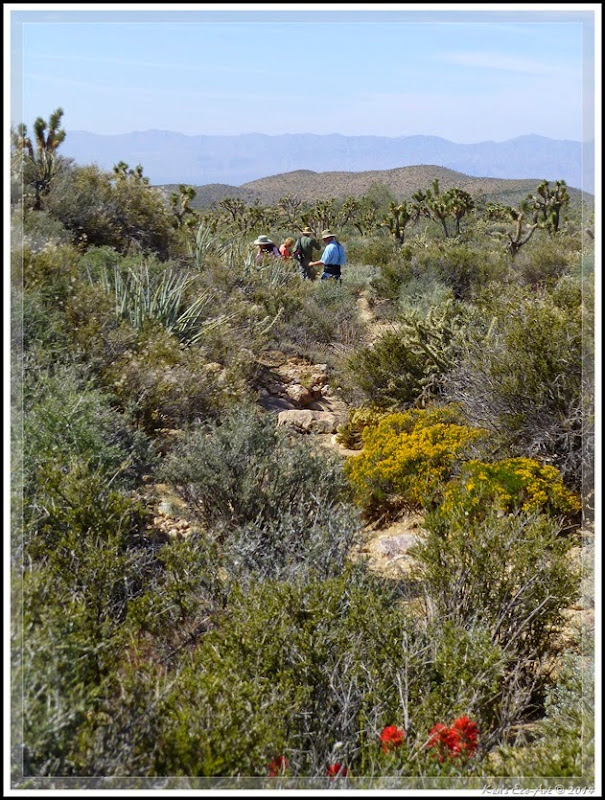 |
| (Fig. 14) |
|
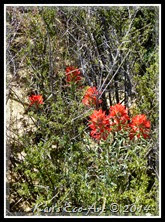 |
| (Fig. 15) |
|
 |
| (Fig. 16) |
|
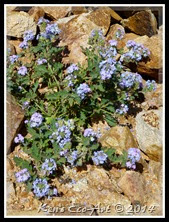 |
| (Fig. 17) |
|
|
![EFP-IMG_6641_thumb[13] EFP-IMG_6641_thumb[13]](http://lh6.ggpht.com/-13nexjtSw68/VHDIPgrnGmI/AAAAAAAA1lk/VDcJpHonlSc/EFP-IMG_6641_thumb%25255B13%25255D_thumb%25255B3%25255D.jpg?imgmax=800) |
| (Fig. 18) |
|
| 01/26/2012 Trip Notes: Even though we spent some time at the Wee Thump Joshua Tree Wilderness Area, we spent the majority of our time hiking around the Crescent Peak area. Though I did not take any pictures at Wee Thump on this trip, you can view pictures from previous hikes here by clicking the following link … Wee Thump Joshua Tree Wilderness Area. Once we reached the parking area near the entrance road to the Crescent Mine, I hiked the wash on the left side of the road as it led up a hill towards the mine. The picture in (Fig. 19) was taken from a spot just south of the mine; looking towards the southwest and shows the wash area that I hiked to this point. The mountain ranges in the background are actually in California. Figures 20 and 21 show some of the cactus I passed while hiking through the wash. |
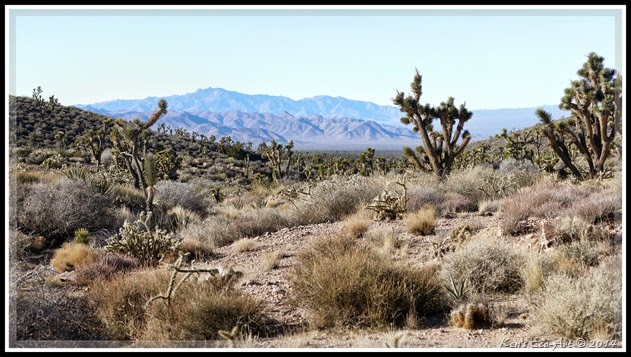 |
| (Fig. 19) |
|
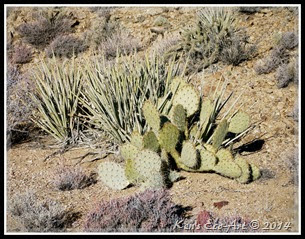 |
| (Fig. 20) |
|
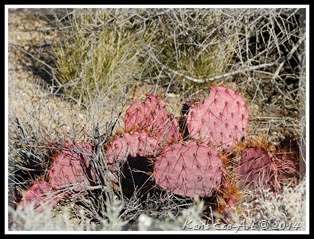 |
| (Fig. 21) |
|
|





















![EFP-IMG_6641_thumb[13] EFP-IMG_6641_thumb[13]](http://lh6.ggpht.com/-13nexjtSw68/VHDIPgrnGmI/AAAAAAAA1lk/VDcJpHonlSc/EFP-IMG_6641_thumb%25255B13%25255D_thumb%25255B3%25255D.jpg?imgmax=800)


